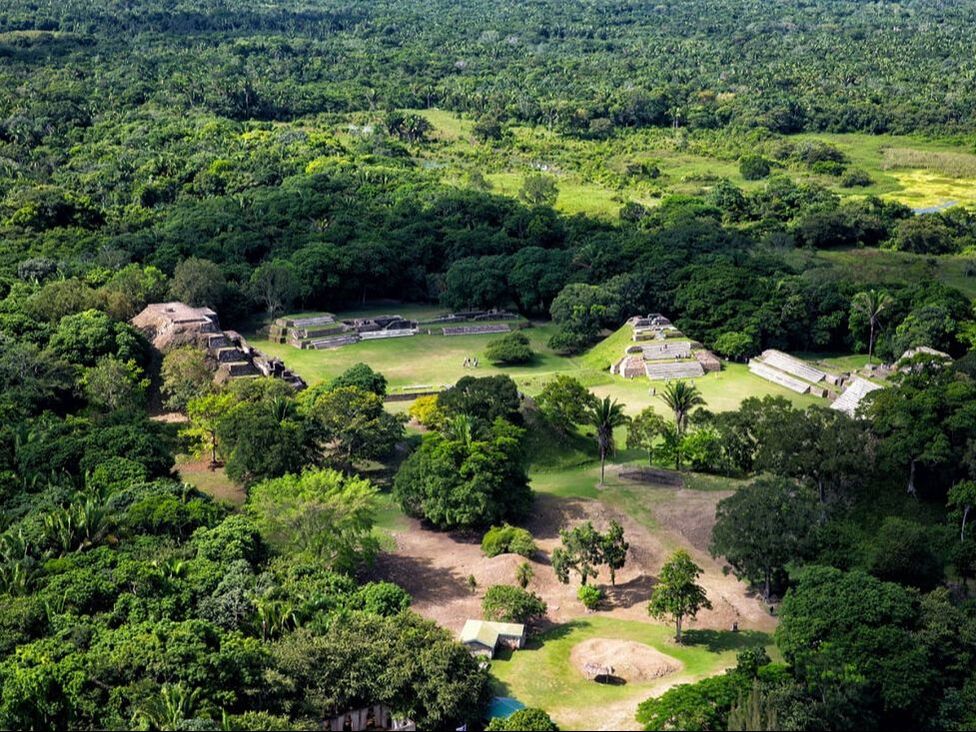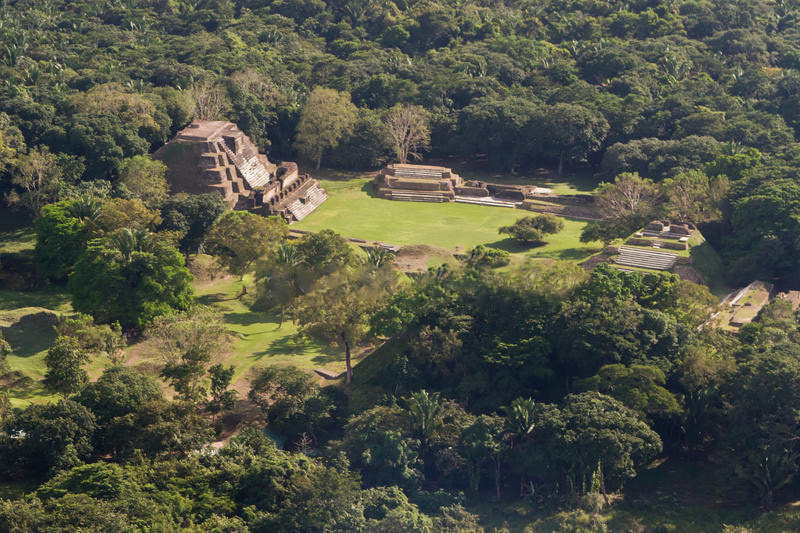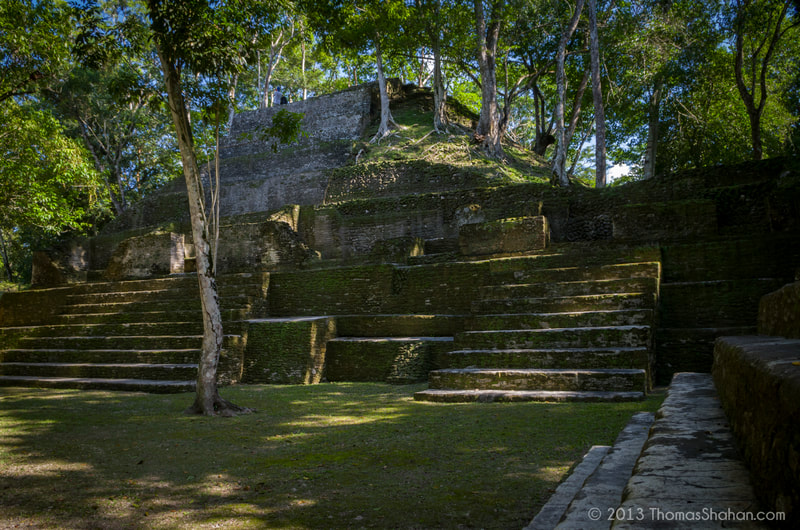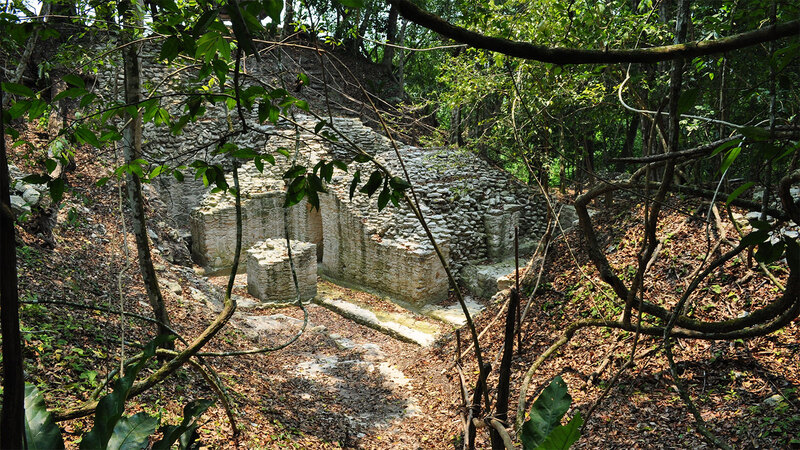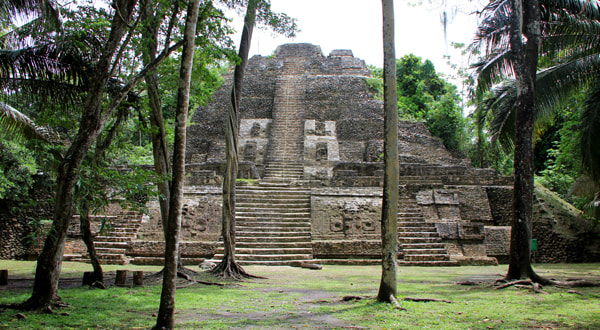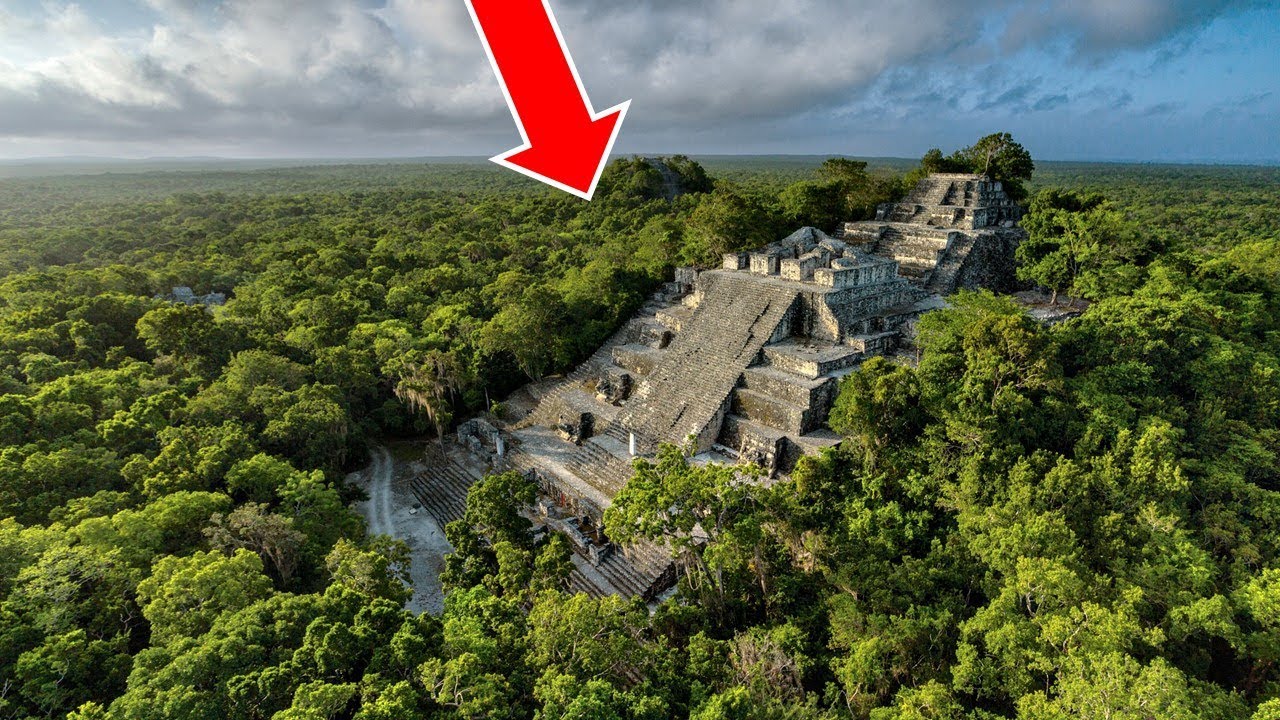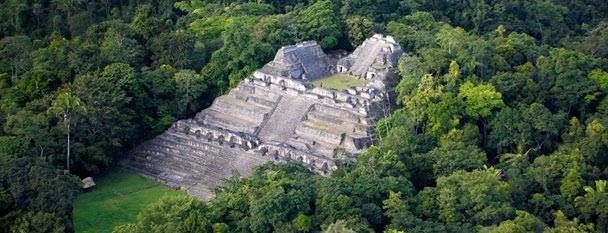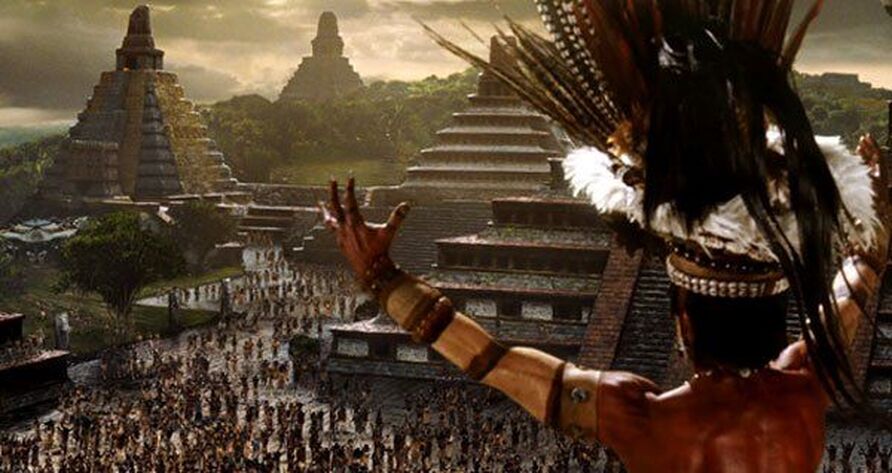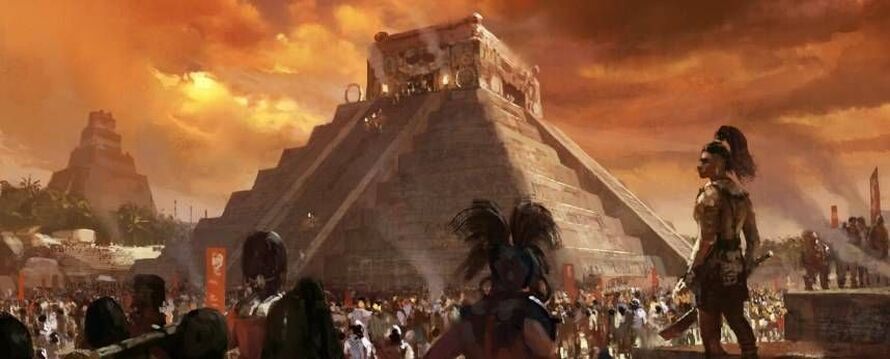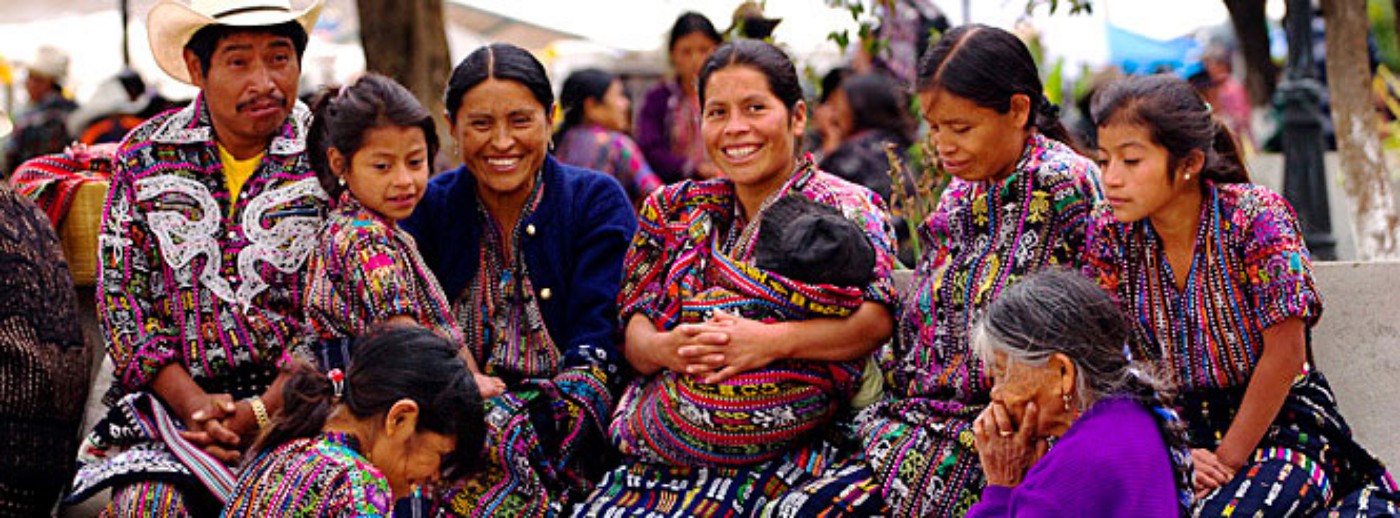MAYAN TEMPLES IN BELIZE
|
FOR MORE INFORMATION
For those of you who would like to read about your adventure prior to taking it, we have provided the following information for you to review. This is an excellent way to help children explore the wonderful world of Belize. Take time to sit down with your children and read to them, what they are about to see. |
MAYAN TEMPLES IN BELIZE
|
BRIEF MAYA HISTORY
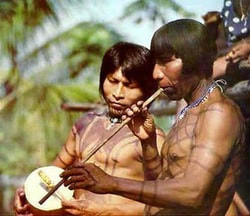
The Maya are probably the best-known of the classical civilizations of Meso-America. Originating in the Yucatan around 2600 B.C., they rose to prominence around A.D. 250 in present-day southern Mexico, Guatemala, western Honduras, El Salvador, and northern Belize.
Building on the inherited inventions and ideas of earlier civilizations such as the Olmec, the Mayans developed astronomy, calendar systems and hieroglyphic writings. The Mayans were famous for building elaborate and highly decorated ceremonial architecture, including temple-pyramids, palaces and observatories. They were also skilled farmers, clearing large sections of tropical rain forest and, where groundwater was scare, building sizable underground reservoirs for the storage of rainwater. The Mayans were equally skilled as weavers and potters, and cleared routes through jungles and swamps to cultivate extensive trade networks with distant people.
Many people believe that the ancestors of the Mayans crossed the Bering Strait at least 20,000 years ago. They were nomadic hunter-gathers. Evidence of settled habitation in Mexico is found in the Archaic period 5000-1500 B.C. - corn cultivation, basic pottery and stone tools.
The first true civilization was established with the rise of the Olmecs in the Pre-Classic period 1500 B.C - 200 A.D. The Omecs settled on the Gulf coast, and little is known about them.
The Mayans are regarded as the inventors of many aspects of Meso-American cultures including the first calendar and hieroglyphic writing in the Western hemisphere. Archeologists have not settled the relationship between the Olmecs and the Mayans, and it is a mystery whether the Mayans were their descendants, trading partners, or had another relationship. It is agreed that the Mayans developed a complex calendar and the most elaborate form of hieroglyphics in America, both based on the Olmec's versions.
Mayans seem to have entered Yucatan from the west. As usual with ancient nations, it is difficult in the beginning to separate myth from history. Their earliest mentioned leader and deified hero, Itzmn, being considered to be simply a sun-god common to the Mayan civilization is represented as having led the first migration from the Far East, beyond the ocean, along a pathway miraculously opened through the waters.
The second migration, which seems to have been historic, was led from the west by Kukulcan, a miraculous priest and teacher, who became the founder of the Mayan kingdom and civilization. Fairly good authority, based upon study of the Mayans chronicles and calendar, places this beginning near the close of the second century of the Christian Era.
Under Kukulcan the people were divided into four tribes, ruled by as many kingly families: the Cocom, Tuuul-xiu, Itza and Chele. To the first family belonged Kukulcan himself, who established his residence at Mayanspan, which thus became the capital of the whole nation. The Tutul-xiu held vassal rule at Uxmal the Itza at Chichen-Itza, and the Chele at Izamal. To the Chele was appointed the hereditary high priesthood, and their city became the sacred city of the Mayans. Each provincial king was obligated to spend a part of each year with the monarch at Mayapan. This condition continued down to abut the eleventh century, when, as the result of a successful revolt of the provincial kings. Mayapan was destroyed, and the supreme rule passed to the Tutul-ziu at Uxmal.
Later on Mayapan was rebuilt and was again the capital of the nation until about the middle of the fifteenth century, when in consequence of a general revolt against the reigning dynasty, it was finally destroyed, and the monarchy was split up into a number of independent petty states, of which eighteen existed on the peninsula at the arrival of the Spaniards.
In consequence of this civil war a part of the Itza emigrated south to Lake Peten, in Guatemala, where they established a kingdom with their capital and sacred city of Flores Island in the lake.
Building on the inherited inventions and ideas of earlier civilizations such as the Olmec, the Mayans developed astronomy, calendar systems and hieroglyphic writings. The Mayans were famous for building elaborate and highly decorated ceremonial architecture, including temple-pyramids, palaces and observatories. They were also skilled farmers, clearing large sections of tropical rain forest and, where groundwater was scare, building sizable underground reservoirs for the storage of rainwater. The Mayans were equally skilled as weavers and potters, and cleared routes through jungles and swamps to cultivate extensive trade networks with distant people.
Many people believe that the ancestors of the Mayans crossed the Bering Strait at least 20,000 years ago. They were nomadic hunter-gathers. Evidence of settled habitation in Mexico is found in the Archaic period 5000-1500 B.C. - corn cultivation, basic pottery and stone tools.
The first true civilization was established with the rise of the Olmecs in the Pre-Classic period 1500 B.C - 200 A.D. The Omecs settled on the Gulf coast, and little is known about them.
The Mayans are regarded as the inventors of many aspects of Meso-American cultures including the first calendar and hieroglyphic writing in the Western hemisphere. Archeologists have not settled the relationship between the Olmecs and the Mayans, and it is a mystery whether the Mayans were their descendants, trading partners, or had another relationship. It is agreed that the Mayans developed a complex calendar and the most elaborate form of hieroglyphics in America, both based on the Olmec's versions.
Mayans seem to have entered Yucatan from the west. As usual with ancient nations, it is difficult in the beginning to separate myth from history. Their earliest mentioned leader and deified hero, Itzmn, being considered to be simply a sun-god common to the Mayan civilization is represented as having led the first migration from the Far East, beyond the ocean, along a pathway miraculously opened through the waters.
The second migration, which seems to have been historic, was led from the west by Kukulcan, a miraculous priest and teacher, who became the founder of the Mayan kingdom and civilization. Fairly good authority, based upon study of the Mayans chronicles and calendar, places this beginning near the close of the second century of the Christian Era.
Under Kukulcan the people were divided into four tribes, ruled by as many kingly families: the Cocom, Tuuul-xiu, Itza and Chele. To the first family belonged Kukulcan himself, who established his residence at Mayanspan, which thus became the capital of the whole nation. The Tutul-xiu held vassal rule at Uxmal the Itza at Chichen-Itza, and the Chele at Izamal. To the Chele was appointed the hereditary high priesthood, and their city became the sacred city of the Mayans. Each provincial king was obligated to spend a part of each year with the monarch at Mayapan. This condition continued down to abut the eleventh century, when, as the result of a successful revolt of the provincial kings. Mayapan was destroyed, and the supreme rule passed to the Tutul-ziu at Uxmal.
Later on Mayapan was rebuilt and was again the capital of the nation until about the middle of the fifteenth century, when in consequence of a general revolt against the reigning dynasty, it was finally destroyed, and the monarchy was split up into a number of independent petty states, of which eighteen existed on the peninsula at the arrival of the Spaniards.
In consequence of this civil war a part of the Itza emigrated south to Lake Peten, in Guatemala, where they established a kingdom with their capital and sacred city of Flores Island in the lake.
RISE OF THE MAYA CIVILIZATIONS
The rise of Maya civilization was a gradual process, that developed over time. It was a combination of a number of related factors: 1) ecological adaptation, 2) temporal and spatial diversity, 3) requirements of the elite subculture, interaction, competition and 4) ideology.
The Maya region, like the greater Mesoamerica region, is diverse in terms of its environment and resources. Trade and the exploitation of local resources, coupled with the development of intensive agriculture led to a steady increase in population. Over time, villages became towns and towns grew into cities and cities became large commercial trade centers.
The Maya area was occupied by a diverse group of people who spoke more than one dialect of Maya (Chol, Chontal, Yucatec, Tzeltzal, Mam, Quiche, etc.) Each Maya city had it's own chief, and this chief controlled a specific area. As chiefs died and new chiefs came to power, civilizations changed over time or under different ruler ships. As a result of interaction, conflict and alliances with other communities, the character of these Maya cities and their civilizations were also constantly changing. The elite desired exotic status, which was represented by the wearing of jade, quetzal feathers, and marine products. Their use of writing and calendars for propaganda, and their construction of monumental palaces and temples, all helped to fuel the economic development of these civilizations. Trade between the Maya people and Mesoamericans and lower Central Americans, led to the movement of many resources and especially ideas.
Trade and exchange therefore fostered increasing economic activities that may have led to the development of specialization and regional markets. Sometimes completion for resources and for economic control of exchange goods led to conflict between communities and cities. Victorious leaders were able to control captured regions, exact tribute, and thereby increase their prestige and influence. All these things in combination, along with surplus food production and a strong belief in the power of their gods and religion, were what undoubtedly led to the establishment of these civilizations.
The Maya region, like the greater Mesoamerica region, is diverse in terms of its environment and resources. Trade and the exploitation of local resources, coupled with the development of intensive agriculture led to a steady increase in population. Over time, villages became towns and towns grew into cities and cities became large commercial trade centers.
The Maya area was occupied by a diverse group of people who spoke more than one dialect of Maya (Chol, Chontal, Yucatec, Tzeltzal, Mam, Quiche, etc.) Each Maya city had it's own chief, and this chief controlled a specific area. As chiefs died and new chiefs came to power, civilizations changed over time or under different ruler ships. As a result of interaction, conflict and alliances with other communities, the character of these Maya cities and their civilizations were also constantly changing. The elite desired exotic status, which was represented by the wearing of jade, quetzal feathers, and marine products. Their use of writing and calendars for propaganda, and their construction of monumental palaces and temples, all helped to fuel the economic development of these civilizations. Trade between the Maya people and Mesoamericans and lower Central Americans, led to the movement of many resources and especially ideas.
Trade and exchange therefore fostered increasing economic activities that may have led to the development of specialization and regional markets. Sometimes completion for resources and for economic control of exchange goods led to conflict between communities and cities. Victorious leaders were able to control captured regions, exact tribute, and thereby increase their prestige and influence. All these things in combination, along with surplus food production and a strong belief in the power of their gods and religion, were what undoubtedly led to the establishment of these civilizations.
CULTURAL ACHIEVEMENTS OF THE ANCIENT MAYAN PEOPLE
There is much physical evidence, which remains of the ancient Maya civilization, is reflected in the ruins left from pyramid temples, palaces, ball courts, and sacbeobs. What is amazing about these buildings, is that they were constructed without the use of the wheel or beasts of burden, which continues to fascinate us.
Their architecture not only made use of the corbel arch but certain temples were positioned so that precise observations of the equinox, solstice and other astronomic events could be made by sighting planets and stars along defined positions on specific buildings. Their use and knowledge of the celestial bodies, produce an extremely accurate calendar (they computed length of a year as being 365.2420, which according to today's calculations is 365.2422. The Maya's concepts of time and mathematics (including the use of zero), led to the development of their elaborate calendar based on cycles that go beyond our weeks, months and years. They used their knowledge to help them schedule the optimum time for planting, and harvesting for their intensive agricultural system.
The Maya developed a logo-syllabic system of writing that incorporated hundreds of hieroglyphic symbols, and was used primarily for recording important historical events. This information was inscribed on stone monuments, wooden lintels, ceramics and in codices (books produced from bark paper). Their artisans produced decorative pottery, murals, figurines, whistles, and carvings in jade, obsidian, slate, shell, human and animal bones.
Their architecture not only made use of the corbel arch but certain temples were positioned so that precise observations of the equinox, solstice and other astronomic events could be made by sighting planets and stars along defined positions on specific buildings. Their use and knowledge of the celestial bodies, produce an extremely accurate calendar (they computed length of a year as being 365.2420, which according to today's calculations is 365.2422. The Maya's concepts of time and mathematics (including the use of zero), led to the development of their elaborate calendar based on cycles that go beyond our weeks, months and years. They used their knowledge to help them schedule the optimum time for planting, and harvesting for their intensive agricultural system.
The Maya developed a logo-syllabic system of writing that incorporated hundreds of hieroglyphic symbols, and was used primarily for recording important historical events. This information was inscribed on stone monuments, wooden lintels, ceramics and in codices (books produced from bark paper). Their artisans produced decorative pottery, murals, figurines, whistles, and carvings in jade, obsidian, slate, shell, human and animal bones.
THE BELIZE MAYAN PEOPLE & THEIR MAYAN NEIGHBORS
The Belize Maya people, were not people to lived in isolation. Evidence suggests that from very early times, there was increasing contact between the Belize Maya people and their neighbors, in the Gulf of Mexico (the Olmecs), in the Oaxaca (the Zapotecs & Mixtecs), in the Valley of Mexico (the Teotihuacanos, Toltecs and Aztecs), and on the east coast (the Tlaxcalans & Uaxtecs).
Between 1200 and 600 BC Maya thinking was influenced, to some degree, by the Olmec people from the Tabasco - Veracruz area. During this time, you will find, that the Belize Maya incorporated many early Olmec-like symbols in their ceramics and artifacts. Jade was imported from the Motagua Valley, and marine shells from the Caribbean and Pacific coasts. The Belize Maya also exported many objects and produce to their neighbors as well.
Conflicts between rival Maya's at Carcol and Tikal, are recorded on several momuments at Caracol. There is also evidence of relationships between Copan and Nim Li Punit, indicated by the presence of the Copan emblem glyph on one of the stela at Nim Li Punit. Additionally, a beautifully painted mural was discovered at the turn of the 20th century by Thomas Gann at Santa Rita, which reflects strong influences from the Mixteca people of Oaxaca. The introduction of metallurgy and the presence of gold and copper objects during this time also indicate contacts with more distant areas (Western Mexico and Costa Rica).
Between 1200 and 600 BC Maya thinking was influenced, to some degree, by the Olmec people from the Tabasco - Veracruz area. During this time, you will find, that the Belize Maya incorporated many early Olmec-like symbols in their ceramics and artifacts. Jade was imported from the Motagua Valley, and marine shells from the Caribbean and Pacific coasts. The Belize Maya also exported many objects and produce to their neighbors as well.
Conflicts between rival Maya's at Carcol and Tikal, are recorded on several momuments at Caracol. There is also evidence of relationships between Copan and Nim Li Punit, indicated by the presence of the Copan emblem glyph on one of the stela at Nim Li Punit. Additionally, a beautifully painted mural was discovered at the turn of the 20th century by Thomas Gann at Santa Rita, which reflects strong influences from the Mixteca people of Oaxaca. The introduction of metallurgy and the presence of gold and copper objects during this time also indicate contacts with more distant areas (Western Mexico and Costa Rica).
ANCIENT MAYA CULTURE
Ancient Maya culture flourished from around 2,000 BC across the southern eastern corner of Mesoamerica. Mesoamerican can be divided into three sub-regions: Southern Highlands, Central Lowlands, and Northern Lowlands.
SOUTHERN HIGHLANDS
There are volcanic mountain ranges in the southern highlands which rise to 14,000 feet and extend to southwestern Chiapas in Mexico and Nicaragua. Resources from this local area were exported from this area and used in producing knives, weapons, and sacrificial blades. The highlands also provided the Maya with jade, quetzal bird feathers, granite, and hematite. Many of these resources were controlled by such cities as Chalchuapa, Kaminaljuyu, Iximche, and Utatlan.
CENTRAL LOWLANDS
The central lowlands extend from the country of Mexico (state of Tabasco), and go across southern Campeche and eastern Chiapas, into the Peten in Guatemala and across most of Belize. This region has rolling terrains, navigable rivers and dense tropical forests. In Pre-Columbian times trading vessels or canoes traveled along the waterways, exchanging products like jaguar skins, flint, marine shells, salt, granite, and cacao. Today, some of the largest and best known Maya cities located in this area - are Tikal, Uaxactun, Naranjo, Yaxha and Mirador in the Peten. In Belize, some of the better known cities are - Calakmul and Becan in Campeche, Kohunlich and Dzibanche in Quintana Roo, and Caracol, Xunantunich, Baking Pot, Lamanai, and Altun Ha.
NORTHERN LOWLANDS
The northern lowlands is an expanse of the Yuvatan peninsula that is flat, and almost featureless. It is broken only by the Puuc hills in a semiarid area of low scrub forests with no surface streams or rivers. The soil in this region is soft, porous, limestone bedrock, and because of this, water can be found in cenotes, or sinkholes where this collapsed bedrock (limestone) has exposed underground streams. Where there is water, you will find settlements in the north that thrived. Despite the environmental limitations, the people here produced and exported salt, marine, shells, cotton for clothing and honey ffrom domesticated bees. The largest, and best-known cities in the north included: Edzna (Campeche), Uxmal, Kahah, Chicken Itza (Yucatan), Coba and Tulum (Quintana Roo).
SOUTHERN HIGHLANDS
There are volcanic mountain ranges in the southern highlands which rise to 14,000 feet and extend to southwestern Chiapas in Mexico and Nicaragua. Resources from this local area were exported from this area and used in producing knives, weapons, and sacrificial blades. The highlands also provided the Maya with jade, quetzal bird feathers, granite, and hematite. Many of these resources were controlled by such cities as Chalchuapa, Kaminaljuyu, Iximche, and Utatlan.
CENTRAL LOWLANDS
The central lowlands extend from the country of Mexico (state of Tabasco), and go across southern Campeche and eastern Chiapas, into the Peten in Guatemala and across most of Belize. This region has rolling terrains, navigable rivers and dense tropical forests. In Pre-Columbian times trading vessels or canoes traveled along the waterways, exchanging products like jaguar skins, flint, marine shells, salt, granite, and cacao. Today, some of the largest and best known Maya cities located in this area - are Tikal, Uaxactun, Naranjo, Yaxha and Mirador in the Peten. In Belize, some of the better known cities are - Calakmul and Becan in Campeche, Kohunlich and Dzibanche in Quintana Roo, and Caracol, Xunantunich, Baking Pot, Lamanai, and Altun Ha.
NORTHERN LOWLANDS
The northern lowlands is an expanse of the Yuvatan peninsula that is flat, and almost featureless. It is broken only by the Puuc hills in a semiarid area of low scrub forests with no surface streams or rivers. The soil in this region is soft, porous, limestone bedrock, and because of this, water can be found in cenotes, or sinkholes where this collapsed bedrock (limestone) has exposed underground streams. Where there is water, you will find settlements in the north that thrived. Despite the environmental limitations, the people here produced and exported salt, marine, shells, cotton for clothing and honey ffrom domesticated bees. The largest, and best-known cities in the north included: Edzna (Campeche), Uxmal, Kahah, Chicken Itza (Yucatan), Coba and Tulum (Quintana Roo).
MODERN MAYA PEOPLE
In spite of the invasion of foreign tourism, Mayan culture has remained amazingly intact. Many of the Yucatan Mayans whose ancestors were hunters, chicle farmers and fisherman now work in hotels and other related businesses. More than 350,000 Mayans living in the Yucatan speak the language of the Yukatec Mayans, and most speak Spanish as a second language, primarily learned in school.
The clothing worn is as it was in the past. It is relatively easy to determine the village in which the clothing was made by the type of embroidery, color, design and shape. Mayan women can be seen wearing juipils, simple cotton dresses decorated with embroidery. The designs in their embroidery and weaving can be traced back to pre-Coumbian times.
Although Mayans in other parts of Central America choose to limit contact with outside influences, Mayans working in the tourist industry are generally open to conversation with polite strangers and if asked will teach you a Mayan phrase or two. In the Indian communities, as it was with their Mayan ancestors, the basic staple diet is corn. Mayan dialects of Qhunche, Cakchiquet, Kekchi, and Mam are still spoken today, although the majority of Indians also speak Spanish.
Despite the effects of deadly epidemics that were introduced by Europeans, and despite persecution by subsequent Central American governments, the Maya culture continues. Today more than five million Maya still live in Belize, Guatemala and southeastern Mexico. In Belize our Maya citizens include ministers of governments, educators, medical doctors, agriculturalists, and specialists in all professional trades.
The clothing worn is as it was in the past. It is relatively easy to determine the village in which the clothing was made by the type of embroidery, color, design and shape. Mayan women can be seen wearing juipils, simple cotton dresses decorated with embroidery. The designs in their embroidery and weaving can be traced back to pre-Coumbian times.
Although Mayans in other parts of Central America choose to limit contact with outside influences, Mayans working in the tourist industry are generally open to conversation with polite strangers and if asked will teach you a Mayan phrase or two. In the Indian communities, as it was with their Mayan ancestors, the basic staple diet is corn. Mayan dialects of Qhunche, Cakchiquet, Kekchi, and Mam are still spoken today, although the majority of Indians also speak Spanish.
Despite the effects of deadly epidemics that were introduced by Europeans, and despite persecution by subsequent Central American governments, the Maya culture continues. Today more than five million Maya still live in Belize, Guatemala and southeastern Mexico. In Belize our Maya citizens include ministers of governments, educators, medical doctors, agriculturalists, and specialists in all professional trades.
